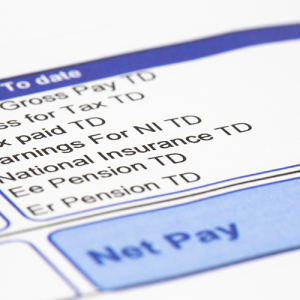20 April 2007
Workplace dress rules have been increasingly in the news as more staff challenge them in court. The public sector is far from immune, and organisations need to ensure their requirements are reasonable
The public sector is a significant employer and as such is continually striving to improve its human resources strategies. One HR area that has recently become controversial is dress at work. This can cover appearance, such as body piercings, tattoos, visible underwear and unusual hair designs and colours, as well as clothing.
More and more stories about workplace dress codes are hitting the headlines, mainly because of legal action taken by disenchanted workers. Most of these cases are based on claims that an employer has breached anti-discrimination laws.
Organisations can reduce their chances of being on the wrong end of a tribunal claim by ensuring their personal appearance code is consistent, sensitive and flexible.
Applying different standards to people doing the same job can lead to legal action. For example, requiring men to adopt a more formal appearance than women will open the door to claims of sex discrimination. This is illustrated by the cases of Pell v Wagstaff and Jarman v The Link Stores Ltd. In the first, a male employee was not allowed to wear his hair long whereas women were, and in the second a male worker was disciplined for wearing an earring.
In both cases, the tribunals found unlawful sex discrimination and were unconvinced by the employers' arguments that they were applying conventional standards of dress and appearance.
The opposite can also apply. In Hutcheson v Graham and Morton Ltd, a female manager was made to wear the same sort of nylon overalls as members of her team. In contrast, male managers were able to wear suits. A tribunal said this was sex discrimination because it implied Hutcheson was of a lower status.
It is also important to bear in mind that standards change. For example, in 1977, a female worker's complaint about not being able to wear trousers to work was rejected by the Employment Appeal Tribunal (Schmidt v Austicks Bookshop). Twenty-three years later, however, a tribunal upheld a claim of sex discrimination from a female employee who was told to change her smart trouser suit for a skirt (Owen v Professional Golf Association).
This is not the end of the story, however. The law recognises that different people and groups have different needs and priorities. So a dress code that appears neutral at first sight could still be unlawful if it disadvantages, say, members of a particular racial, ethnic or religious group. Organisations need to be sensitive to the requirements and conventions of all cultures, religions and similar belief systems.
An excellent round-up of the common practices of the religions and beliefs most practised in the UK can be found in guidance published by Acas, the Advisory, Conciliation and Arbitration Service.
That is not to say that every form of religious or cultural dress must be accommodated. An employer will be able to resist a challenge to its policies if it can show that it has a legitimate reason for regulating someone's appearance, that its rules are needed to achieve its objective, and that its policy is not out of proportion to what it is trying to achieve.
This was precisely what Kirklees Metropolitan Borough Council was able to demonstrate when faced with a claim from Aishah Azmi, a teaching assistant in Dewsbury who was suspended for refusing to obey an instruction not to wear a full-face veil in the classroom. Last October, a tribunal ruled that, in view of the impact that wearing a full-face veil would have on a teaching assistant's ability to do their job, the school's actions did not constitute religious discrimination (although shortcomings in the way her complaint had been handled did lead to compensation being awarded for victimisation). In March, Azmi's appeal against the decision failed.
The case does not set a precedent. It does, however, illustrate the need for flexibility when adopting or applying rules about appearance. There the school allowed the full-face veil to be worn when not teaching, and this played an important part in convincing the tribunal that the school's requirements were not excessive. Other employers would be expected to be equally open-minded and, in particular, to consider whether there is any scope for achieving their objectives in a less restrictive way.
Managers would also be expected, where reasonable, to adjust their dress code if it disadvantaged someone with a disability. Similarly, they might have to relax or adapt it to accommodate pregnant women and those undergoing gender reassignment.
Legalities aside, staff who feel they have had excessively prescriptive rules imposed upon them can feel disengaged from an organisation. Talking to staff at an early stage can lead to greater understanding on both sides. Ultimately, a workforce is more likely to accept a policy that it has had a hand in shaping.
Stephen Cirell is head of local government and Professor John Bennett is a consultant solicitor with Eversheds. Eversheds is running a series of half-day courses on dress codes in its offices, starting in London on June 8. e-mail [email protected]
PFapr2007


















